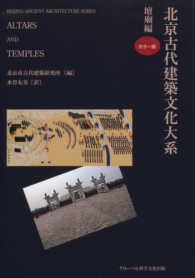Full Description
The influence of Miles Davis's "second great quintet," consisting of Davis (trumpet), Wayne Shorter (tenor saxophone), Herbie Hancock (piano), Ron Carter (bass), and Tony Williams (drums) continues to resonate. Jazz musicians, historians, and critics have celebrated the group for its improvisational communication, openness, and its transitional status between hard bop and the emerging free jazz of the 1960s, creating a synthesis described by one quintet member as "controlled freedom." The book provides a critical analytical study of the Davis quintet studio recordings released between 1965-68, including E.S.P., Miles Smiles, Sorcerer, Nefertiti, Miles in the Sky, and Filles de Kilimanjaro. In contrast to the quintet's live recordings, which included performances of older jazz standards, the studio recordings offered an astonishing breadth of original compositions. Many of these compositions have since become jazz standards, and all of them played a central role in the development of contemporary jazz composition.
Using transcription and analysis, author Keith Waters illuminates the compositional, improvisational, and collective achievements of the group. With additional sources, such as rehearsal takes, alternate takes, session reels, and copyright deposits of lead sheets, he shows how the group in the studio shaped and altered features of the compositions. Despite the earlier hard bop orientation of the players, the Davis quintet compositions offered different responses to questions of form, melody, and harmonic structure, and they often invited other improvisational paths, ones that relied on an uncanny degree of collective rapport. And given the spontaneity of the recorded performances-often undertaken with a minimum of rehearsal-the players responded with any number of techniques to address formal, harmonic, or metrical discrepancies that arose while the tape was rolling.
The book provides an invaluable resource for those interested in Davis and his sidemen, as well as in jazz of the 1960s. It serves as a reference for jazz musicians and educators, with detailed transcriptions and commentary on compositions and improvisations heard on the studio recordings.
Contents
Introduction and Acknowledgements ; 1. The Quintet ; 2. Analytical Strategies ; 3. E.S.P. ; 4. Miles Smiles ; 5. Sorcerer ; 6. Nefertiti ; 7. Miles in the Sky and Filles de Kilimanjaro ; 8. The Quintet and Its Legacies

![Closer to Liberation: Pin[a/x]y Activism in Theory and Practice](../images/goods/../parts/goods-list/no-phooto.jpg)





